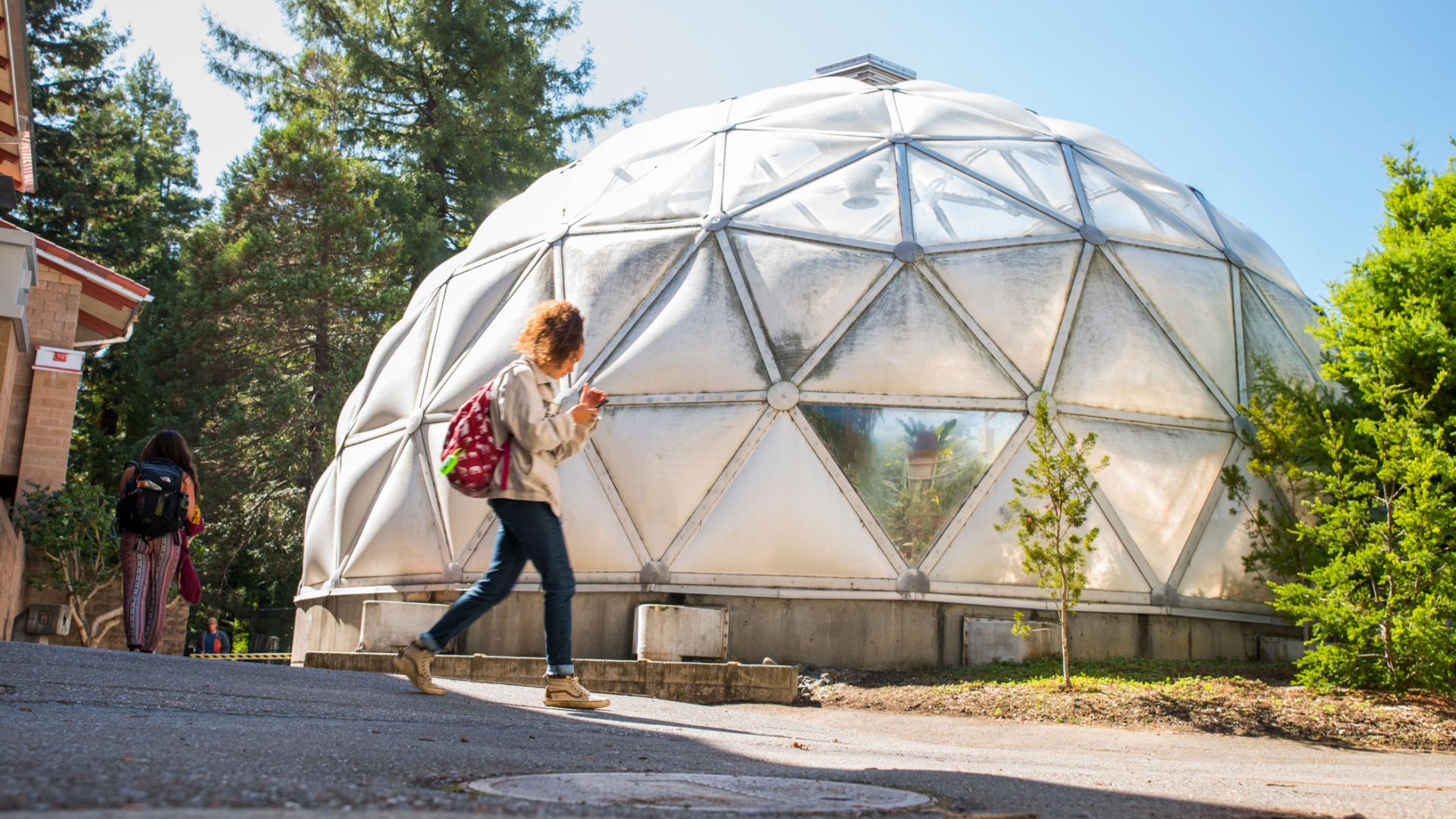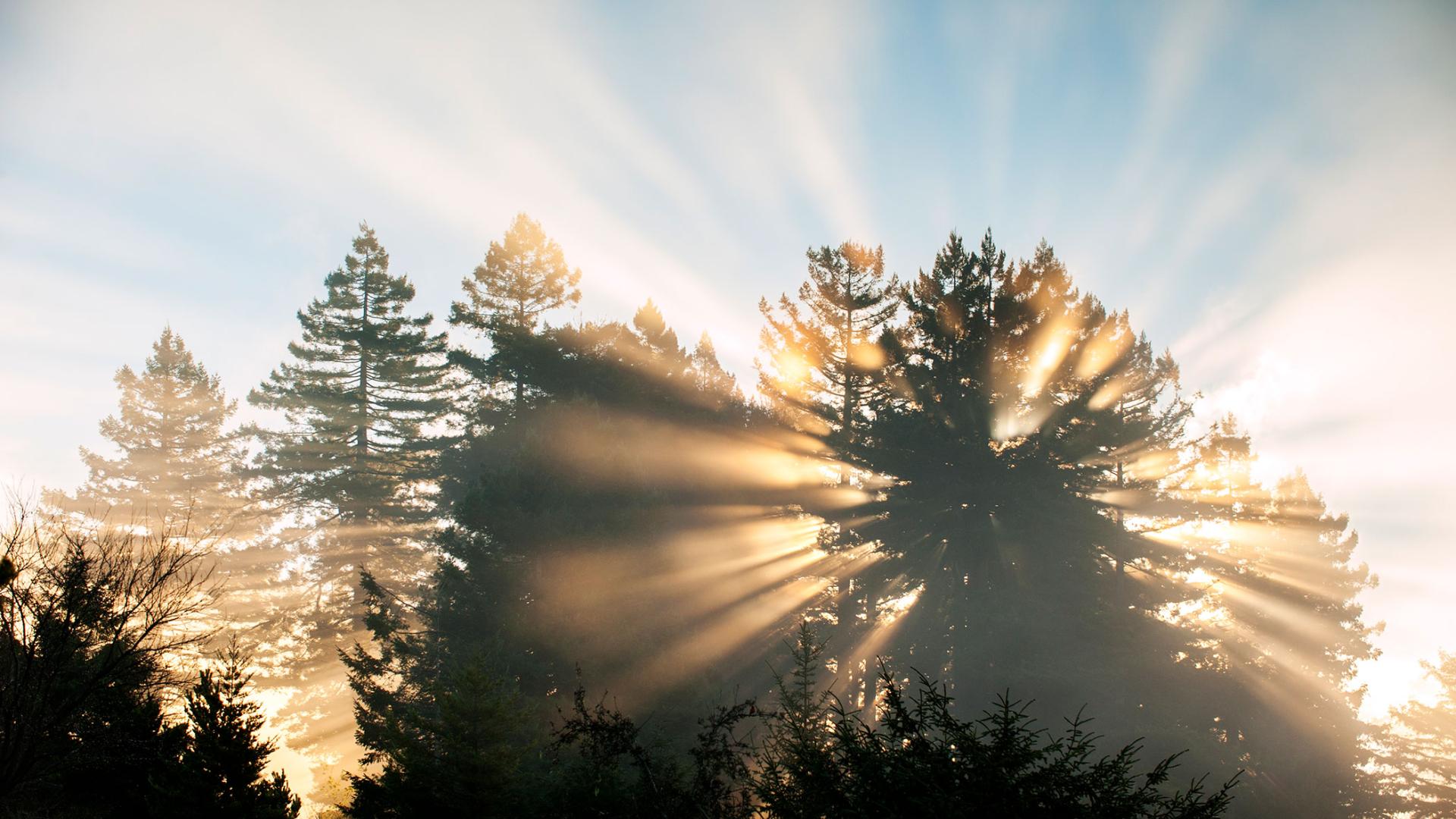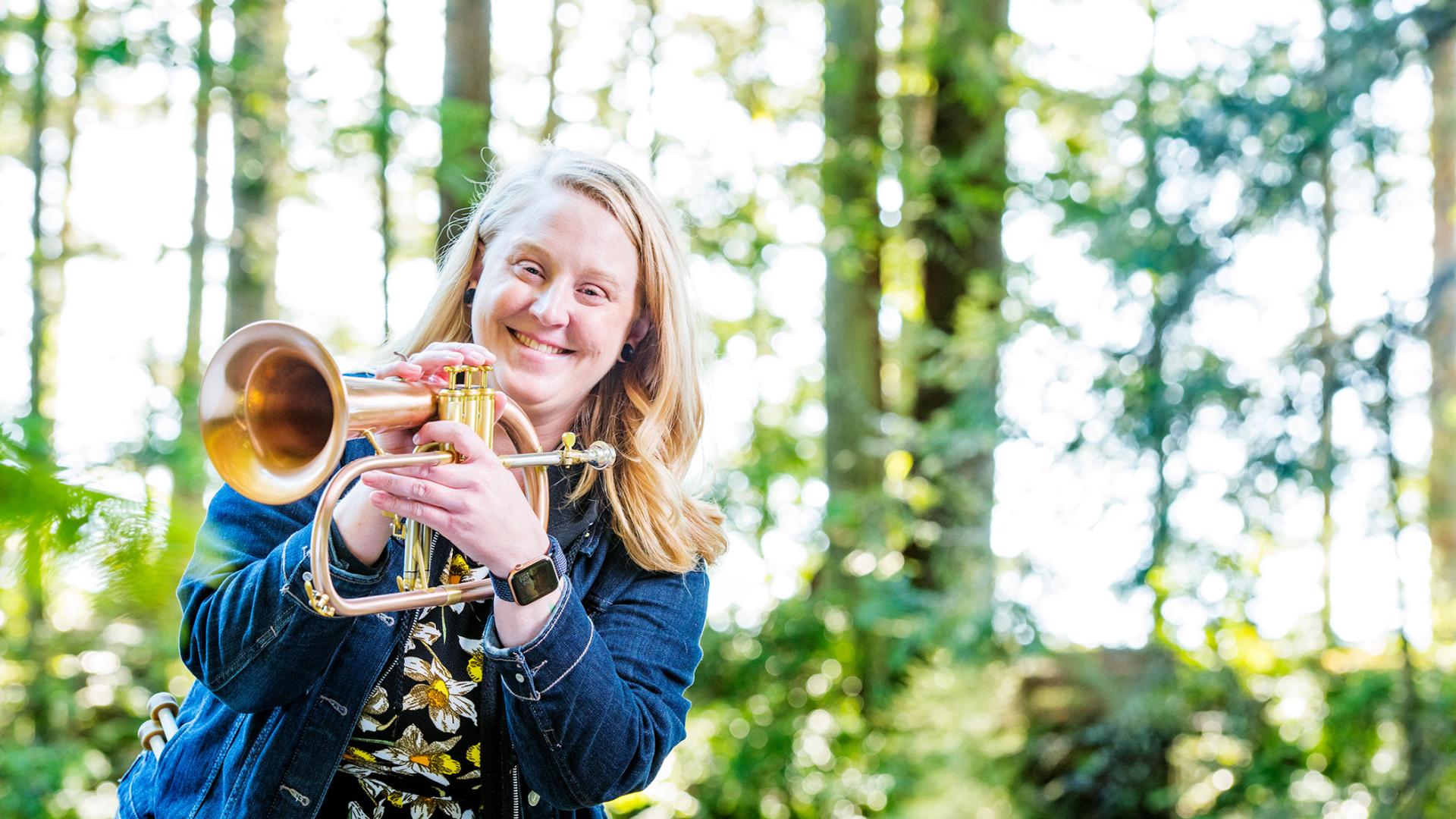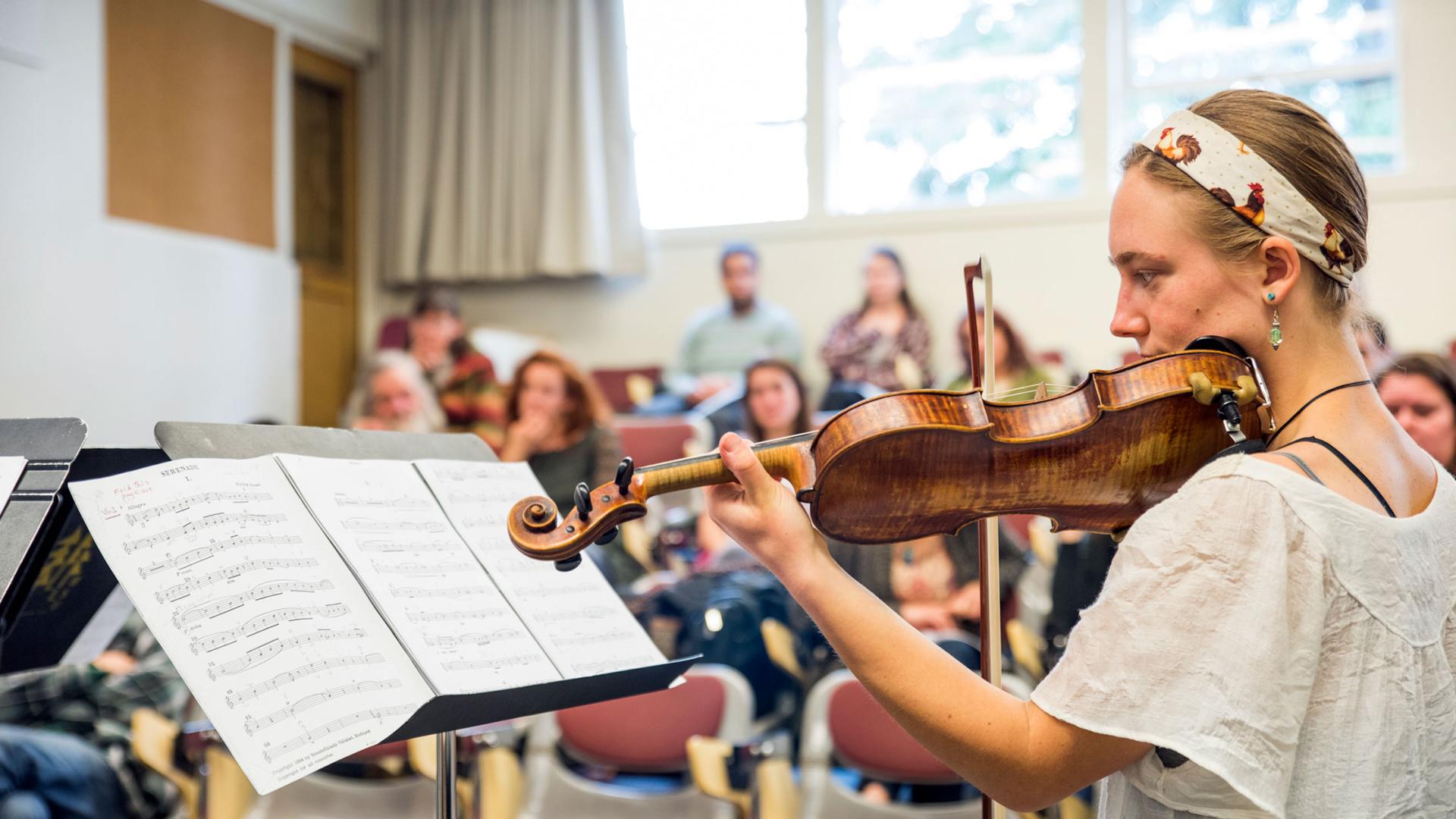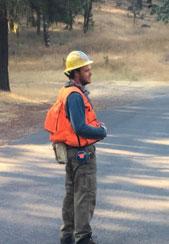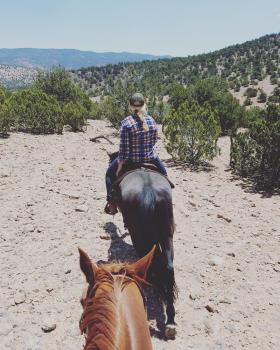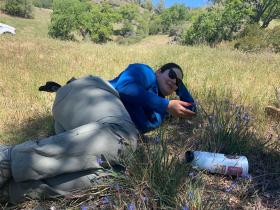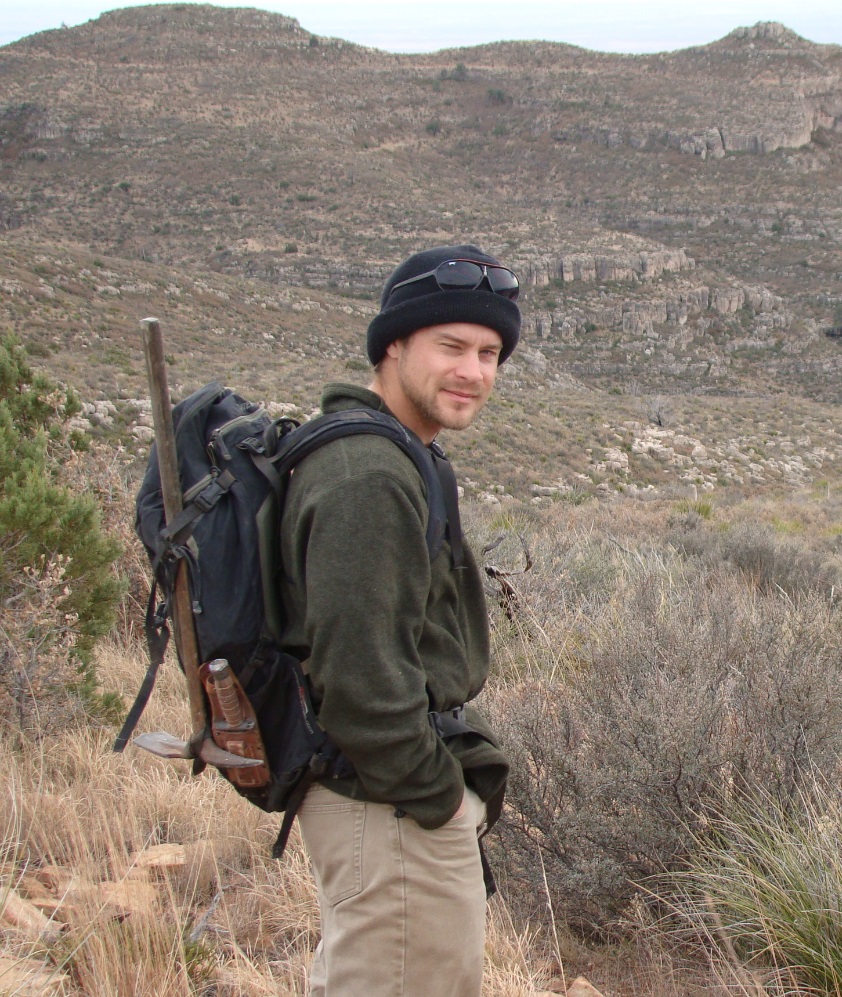Breadcrumb
Department of Forestry, Fire & Rangeland Management
Forests cover one-third of the land area in the United States and rangelands cover more than half of the earth’s land surface. Forestry, Rangeland Resource Science, and Applied Fire Science & Management degrees teach you to connect with and manage these lands, ensuring a sustainable future for the nation. At Humboldt, students get hands-on learning in some of the world’s most spectacular and important forests and rangelands, personal attention from faculty, and a clear path to a career outdoors.
Choose from Three Majors
In the Department of Forestry, Fire & Rangeland Management, you can choose to major in Forestry, Rangeland Resource Science, or Applied Fire Science & Management.
Forestry, B.S.
Cal Poly Humboldt is surrounded by redwood forests. You’ll gain hands-on experience and the skills that employers are looking for. Our staff and faculty work closely with students to help them understand the biological complexities of the forest and the interactions between the forest and social and economic forces, all through a lens of sustainability.
You must choose one of six concentrations:
- Forest Hydrology
- Forest Operations
- Forest Restoration
- Forest Soils
- Tribal Forestry
- Wildland Fire Management
Rangeland Resource Science, B.S.
Open expanses of grasslands—private ranches, as well as federal and state land—are just minutes from Cal Poly Humboldt. You’ll learn from these lands through fieldwork, hands-on experiences, and faculty connections, gaining an understanding of how important they are as wildlife habitat and to human society. Those experiences turn into careers—government and private employers are always looking for rangeland and soil scientists, and opportunities are growing.
This program has one optional concentration:
- Wildland Soils
Applied Fire Science & Management, B.S.
Wildfires are becoming larger and burning hotter and more frequently. The Applied Fire Science & Management B.S. program is meeting that challenge head on. Students explore fire science and management from multiple disciplines and perspectives that include Traditional Ecological Knowledge (or Native wisdom). Learning best modern practices for our changing climate and growing world provides students with a strong background in the science, management, and policy of fire.
Graduate Program
Natural Resources, M.S.
Forestry is one of four options in the Natural Resources, M.S. program.
The program includes options in Environmental Science & Management (ESM), Forestry, Watershed & Wildland Sciences (FWWS), Wildlife, and Fisheries, and provides graduate training in traditional disciplines, as well as flexibility for training in the interdisciplinary aspects of natural resources.
Forestry
Rangeland Resource Science
Career Options
Forestry and rangeland scientists are in high demand. Our graduates have gone onto careers in private and public sectors, and tribal and nonprofit conservation agencies. They hold leadership positions at land management agencies and teach at major universities.
Here are a few possible career options:
Careers in Forestry
- Carbon auditor
- Consulting forester
- Fire management specialist
- Forester
- Geospatial technician
- Habitat restoration specialist
- Soil scientist
- Water resource analyst
- Registered professional forester
- Timberland appraiser
Careers in Rangeland Resource Science
- Biological Science Technician
- GIS Application Specialist
- Habitat Restoration Specialist
- Land Management Supervisor
- Hunting/Fishing Guide
- Natural Resource Specialist
- Rangeland Mgmt Specialist
- Range Technician
- Soil Conservationist
- Soil Scientist
Careers in Applied Fire Science & Management
- Battalion chief
- Fire captain
- Fire ecologist
- Fire effects monitor
- Fire management officer
- Fire management specialist
- Fire planner
- Fire use module lead
- Fuels management specialist
- Prescribed fire burn boss
- Prescribed fire and fuels technician
- Wildland firefighter
Why our Forestry B.S. program stands out
You can’t dig and describe a soil profile or quantify vegetation communities while sitting in a classroom. The RRS program arguably spends more time afield than any other major on campus. Additionally, our students travel to participate in contests and workshops in plant identification and collegiate soil judging.
A recent survey of our graduates showed that nearly all found jobs in their chosen careers. Their main employers—private companies and governmental agencies such as the U.S. Forest Service—also make lots of summer jobs available to our students, providing an opportunity to make money, establish contacts, sharpen your skills, and see different parts of the western United States.
Despite being the largest forestry department in California (almost 300 students), we remain a cohesive community where classes are small and professors know students by name. Perhaps because of all the time spent outdoors together (especially in the rain!), students routinely form bonds that persist long after they graduate and go on to careers in places far from one another.
The educational program leading to the Bachelor of Science in Forestry degree is accredited by the Society of American Foresters (SAF), the largest professional forestry organization in the United States. SAF accreditation ensures that a program meets standards set by the profession and increases and enhances employment opportunities for students.
- Identify and describe the physical, chemical, and biological characteristics of forests and other wildland ecosystems
- Explain the ecological, hydrological, edaphic, social, political, and economic structures and processes related to forest and wildland ecosystems across spatial and temporal scales
- Measure, calculate, analyze, and model forest resources and associated processes utilizing mathematics, statistics, and geospatial tools
- Communicate about forest and wildland ecosystems effectively in oral and written formats
- Comprehend and utilize scientific publications in the fields of forestry, ecology, hydrology, rangelands, and soils
- Use critical thinking skills to apply multidisciplinary knowledge of forest resources, policy, administration, and economics to manage forest and wildland resources for diverse objectives
- Become ethical professionals with a sense of life-long learning and curiosity who contribute to developing sound policy and addressing social needs related to forest and wildland resources
Why our Rangeland Resource Science B.S. program stands out
You can’t dig and describe a soil profile or quantify vegetation communities while sitting in a classroom. The RRS program arguably spends more time afield than any other major on campus. Additionally, our students travel to participate in contests and workshops in plant identification and collegiate soil judging.
Our program typically has about 50 students learning and discovering together, alongside other natural resources and sciences majors. Humboldt’s RRS major is the only program in California that regularly offers courses to qualify for the federal job series 0454 “Rangeland Management Specialist.” Our RRS curriculum also fulfills educational requirements to become a California Certified Rangeland Management Specialist.
For 50 years employers have sought out the quality and specialized skill sets they know Humboldt Range and Soils students and alumni have. We teach and learn about applied terrestrial ecology; developing expertise in soils, plants, animals, and related human interactions.
Why our Applied Fire Science & Management B.S. program stands out
Students build a strong foundation in the science, management, and policy of fire. They conduct research that is timely, relevant, and takes into consideration multiple perspectives.
Exacerbated by drought, fire suppression policies, and climate change, wildfires are becoming more frequent, larger, and more destructive. The Applied Fire Science & Management bachelor’s degree program meets this challenge head-on by exploring the science and management of fire from multiple disciplines and perspectives, including local indigenous knowledge. Exploring and learning from a dynamic and varied set of practices provides students with a strong background in fire science, management, and policy in a rapidly changing world.
Students take their learning beyond the classroom to conduct research, which local partners use to inform fire management learning techniques. First-year, first-time students will automatically be enrolled in the Klamath Connection. One of several place-based learning communities, the free year-long program of science and general education (GE) courses and activities focus on one theme: the Klamath River. Students have access to the campus Fire Lab, which is among the most well-equipped fire research facilities in any university in the country.
The region has 680,000 acres of state and national parks and 1.5 million acres of forest, making Cal Poly Humboldt the perfect place to live and learn. We are only 45 minutes west of a set of large, recent wildfires to study. There are many prescribed burns and indigenous cultural burns nearby as well.
- The Arcata Community Forest: Just behind campus, the 790-acre redwood forest is a nationally recognized model of excellent forestry and land stewardship.
- Jacoby Creek Forest: The nearly 900-acre property acquired by the University is a major destination for field trips, capstone projects, and student research.
- L.W. Schatz Demonstration Tree Farm: This 385-acre property serves as a field experiment station for student and faculty research, an outdoor classroom for educators, and a demonstration area for forestry professionals.
Cal Poly Humboldt is located in the heart of the coastal redwood forest. The surrounding environment is perfect for hands-on experience beyond the classroom.
Jeff Kane and Jackson Carrasco (2024)
Forestry, Fire & Rangeland Management
Jeff Kane (Forestry, Fire, and Rangeland Management) and graduate student Jackson Carrasco (2024) published a research paper in the journal Forest Ecology and Management entitled "Tree and stand characteristics moderate wildfire severity and promote resilience in secondary coast redwood forests". The findings of the research indicate that redwoods are highly resilient to wildfire but can result in substantial changes to forest structure and composition. However, the magnitude of forest changes was associated with tree and stand conditions, suggesting that management actions in these forests can be used to limit impacts from wildfire.
Angelina Garcia, Adam Canter
Forestry, Fire & Rangeland Management
Graduate students Angelina Garcia and Adam Canter were selected for a competitive USDA-ARS NextGen Fellowship. Angelina will examine how rangeland invasive species management affects soil properties and plant traits. Adam will study how invasive species management and small-scale control burns can be used to restore species culturally in coastal prairies important to Wiyot people.
Logan Holey
Forestry, Fire & Rangeland Management
Logan Holey was awarded a competitive undergraduate research grant from the Northern California Botanists to conduct research on how air temperature and photosynthetically active radiation vary and potential effects on rangeland plant communities across microhabitats at local solar microgrids in Arcata, McKinleyville and Kneeland.


